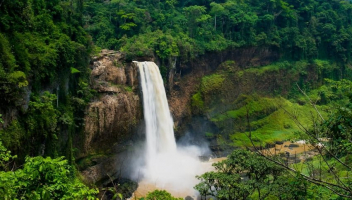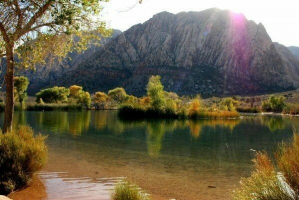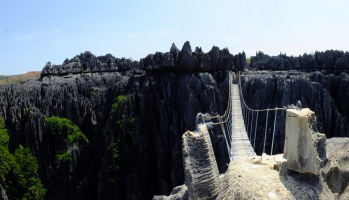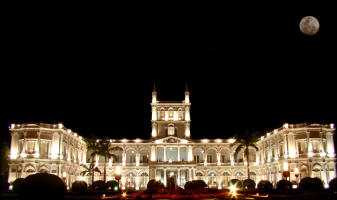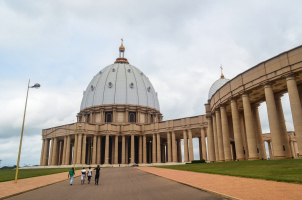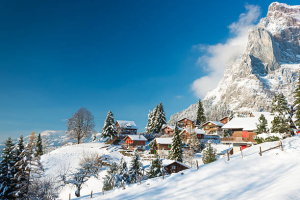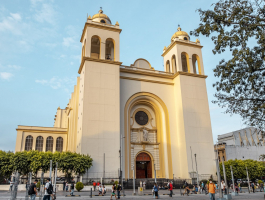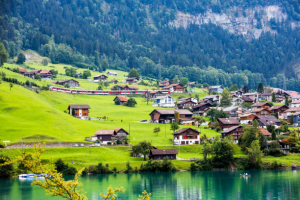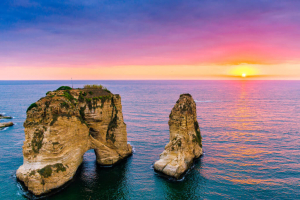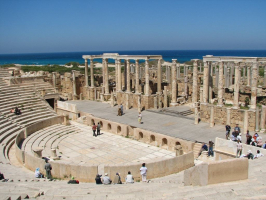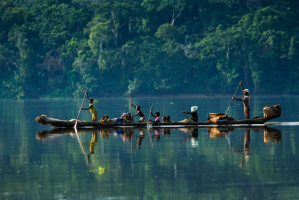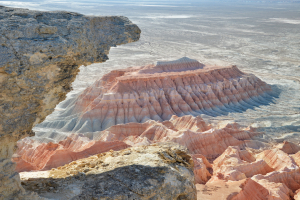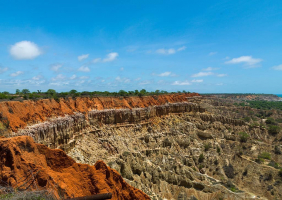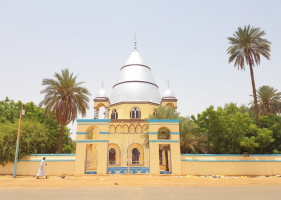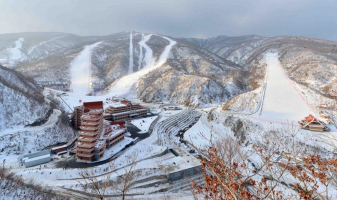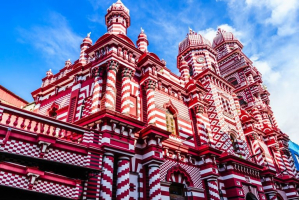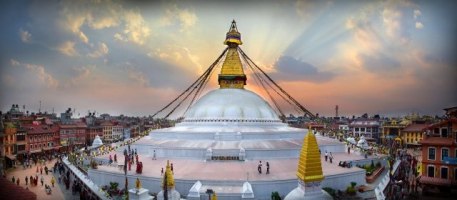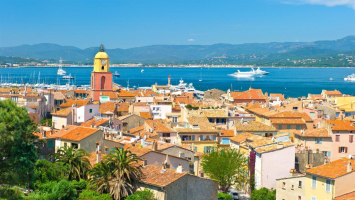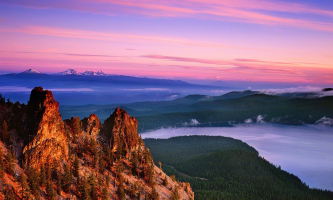Top 15 Best Places to Visit in Lima
At first glance, Lima appears to stretch endlessly from the sea into the hills, a sprawling metropolis that bears no resemblance to the tourist images of ... read more...brightly dressed Andean villagers posing with their llamas in front of soaring mountain peaks. However, a closer look reveals that this massive city, which is home to nearly one-third of Peru's population, has its own attractions that are as fascinating and colorful as the inland scenes you've depicted. To find all the best places to visit in Lima, follow this list of the top tourist attractions in the exciting city.
-
The groundbreaking ceremony for Lima's Cathedral took place on the city's foundation day, January 18, 1535). While the first church was quite simple, constant repairs due to earthquake damage and expansions in the 17th century, including three additional naves and a side chapel, gave Lima an immense Baroque cathedral reflecting the importance of the Catholic Church in Colonial times.
Repeated smaller and larger earthquakes, particularly the one in 1746, demolished the church, begging for a lighter structure. As a result, the Lima Cathedral was altered and repaired numerous times. The current Cathedral is based on the original design and plans of the building that was destroyed in 1746. The impressive structure, which today consists of a central nave, two side aisles, and 13 chapels, reflects various art epochs ranging from Baroque to Neoclassicism.
The cathedral's front is carved in stone and embellished with exquisite details and decorations. The interior design combines late Gothic, Baroque, and Neoclassical elements. The vaulted ceiling and checkerboard flooring are stunning, as are the gold-plated main altar and the carved wooden choir stalls, which have detailed carved arms and backs representing saints, virgins, and apostles.
The remains of Francisco Pizarro, the founder of Lima who dictated the design and layout of the first building of the Cathedral of Lima, are housed in a beautifully mosaic-decorated grave chapel. The Lima Cathedral's Religious Art Museum is housed in the old sacristy and adjoining rooms. The museum houses religious paintings, sculptures, and a plethora of liturgical objects. If you take a guided tour, you will be led not only through the museum but also through the entire church.
Google rating: 4.7/5
Address: Jirón Carabaya, Lima 15001, Peru
Phone: +51 1 4279647
Website: http://www.arzobispadodelima.org/Youtube Channel: ayks lurve 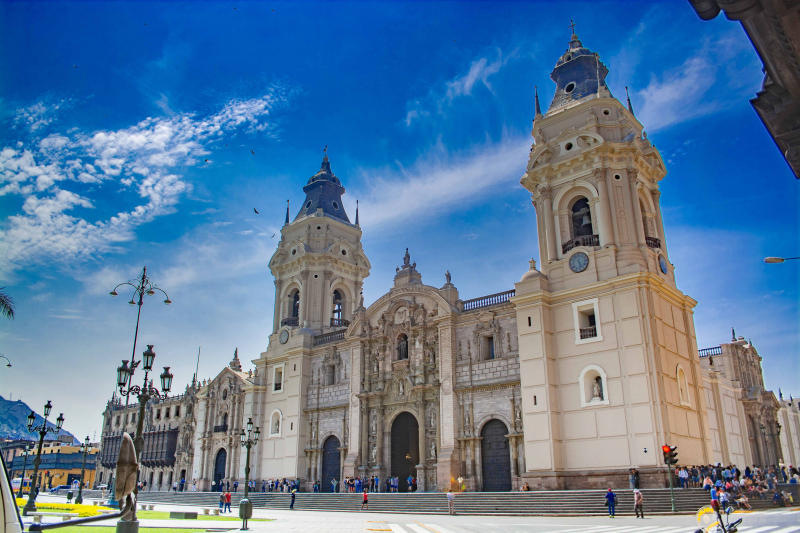
Image by Eduardo Garcia via unsplash.com -
The Museo Larco depicts for visitors an engaging narrative of the development of Peru's pre-Columbian history over 5000 years, making it the ideal way to understand ancient Peru. Its masterpieces have become global icons of Pre-Columbian art after being displayed in the world's leading museums. Peru is famous around the world for the Inca Empire on the Andes Mountains; however, few people realize that this society only existed for the last 100 years before the arrival of the Spanish conquistadores.
The Museo Larco provides a comprehensive overview of Peru's fascinating history in a simple yet thorough manner, making it a must-see for foreign visitors seeking to understand Peru as a cultural destination. Places such as the great temple of Pachacamac just a few miles South of Lima, the famous Nasca lines on the southern coast, the magnificent Pyramids of the Sun and of the Moon up North, and of course even Machu Picchu the superb Inca sanctuary in Cusco, start making sense when they're seen as part of a broader and deeper history.
The Museo Larco has strived to create an unforgettable experience for each visitor since its inception. To achieve this goal, the museum has put a lot of thought into every aspect of this living, and cultural experience. The colonial architecture, décor, elegantly presented galleries bathed in warm colors and intimate lighting, the fascinating narrative told by breathtaking works of art, the lush gardens, the exquisite museum's gift shop, and the extraordinary local and international cuisine at the museum's restaurant are just a few of the many ingredients that make up this boutique museum's sensual and educational experience.
Google rating: 4.7/5
Address: Av. Simón Bolivar 1515, Pueblo Libre 15084, Peru
Phone: +51 1 4611312
Website: http://www.museolarco.org/Youtube Channel: Nilton César Lino Trujillo Marín 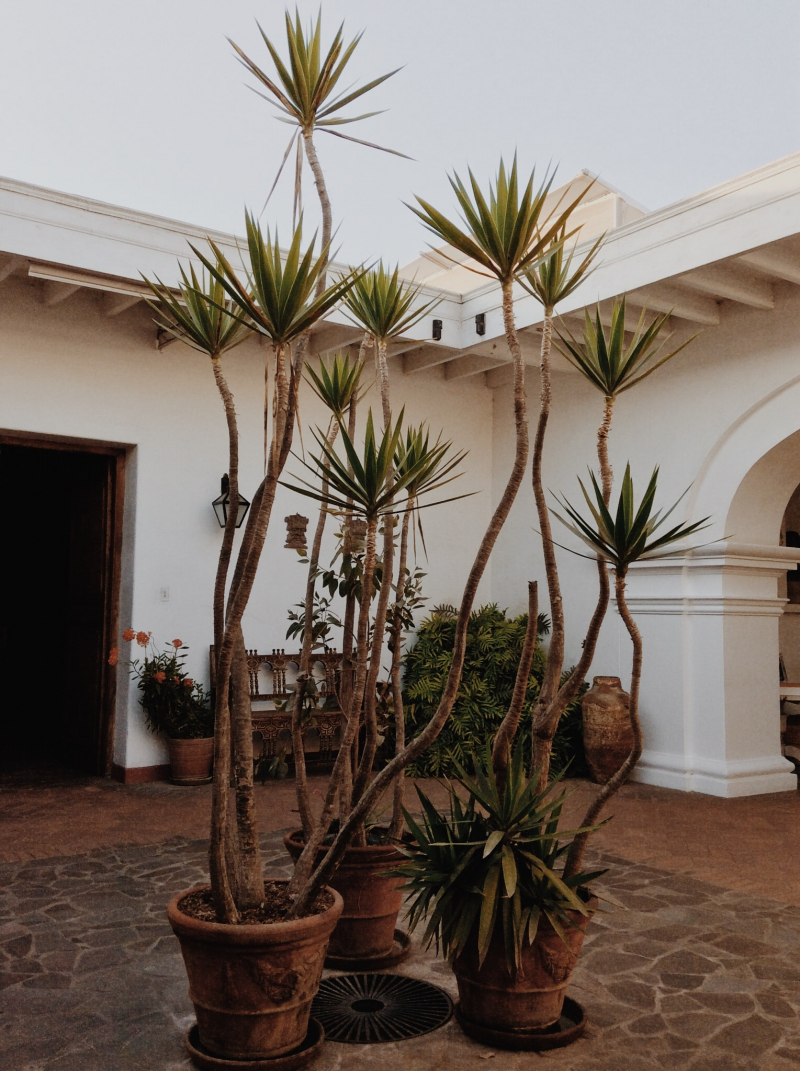
Image by Gianfranco Peña via unsplash.com -
The Sanctuary of Las Nazarenas (Iglesia de las Nazarenas) is the focal point of Lima's Lord of Miracles, a massive October festival in which purple-clad revelers parade down Lima's main streets carrying the Cristo Moreno. Visit the church on your own or as part of a half-day guided tour that also includes stops at the Church and Sanctuary of Saint Rose of Lima and the Monastery of Santo Domingo, where two saints are buried. Other tours take visitors to attractions outside the historic center, such as the Larco Herrera Museum, which houses art and artifacts dating back 3,000 years.
Lima's Church of the Nazarenas, located several blocks east of the Plaza de Armas, has a unique history. This was once a poor neighborhood of freed black slaves, and an ex-slave painted a mural of the Crucifixion of Christ on a wall in the middle of what was little more than a shanty town.
An earthquake in 1655 leveled most of this area but left the wall standing. The locals saw this as a miracle, and the Iglesia de Las Nazarenas was built around the image, which was known as El Seor de los Milagros. This wall, which stands behind the altar, now has an oil replica mounted on it. Every October 18, the painting is paraded through the streets as part of the El Seor de los Milagros Festival, accompanied by a procession of thousands.
Google rating: 4.7/5
Address: Jr. Huancavelica 515, Lima 15001, Peru
Phone: +51 1 4235718
Facebook: https://www.facebook.com/profile.php?id=100079452618915Youtube Channel: Visita Lima 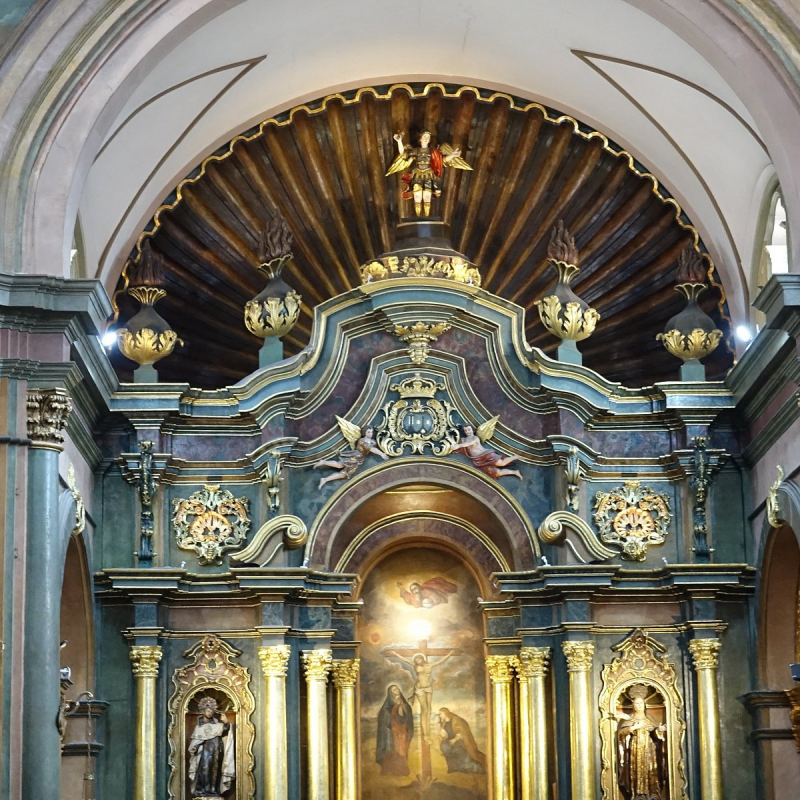
Image by DPMALLIC via pixabay.com (photo is used for illustration only) -
The La Marina Lighthouse (Spanish: Faro de la Marina) is an active lighthouse located on high cliffs above the Pacific Ocean in Lima's Miraflores district. It is one of the country's most well-known and visited lighthouses. Originally built in 1900 at Punta Coles, a headland near Ilo, the lighthouse was dismantled and rebuilt in Miraflores in 1973 by the Peruvian Navy's Directorate of Hydrography and Navigation. It has remained in the appropriately named Parque el Faro, one of a number of popular parks above the city's cliffs commemorating a century of Peruvian navigation.
The gallery and lantern on the 22-meter (72-foot) iron tower are painted a very dark blue with two white bands. Its light can be seen for 24.3 nautical miles and consists of three flashes of white light spread out over fifteen seconds. Many people believe that Frances Gustave Eiffel, the 19th-century French engineer who built the Eiffel Tower and designed the iron skeleton inside the Statue of Liberty, designed this famous lighthouse. However, there is no documentation to support this, so it appears to be an urban legend. This is one of the best places to visit in Lima.
Google rating: 4.7/5
Address: Mal. Cisneros 18, Miraflores 15074, Peru
Phone: noneWebsite: none
Youtube Channel: WalkingPe 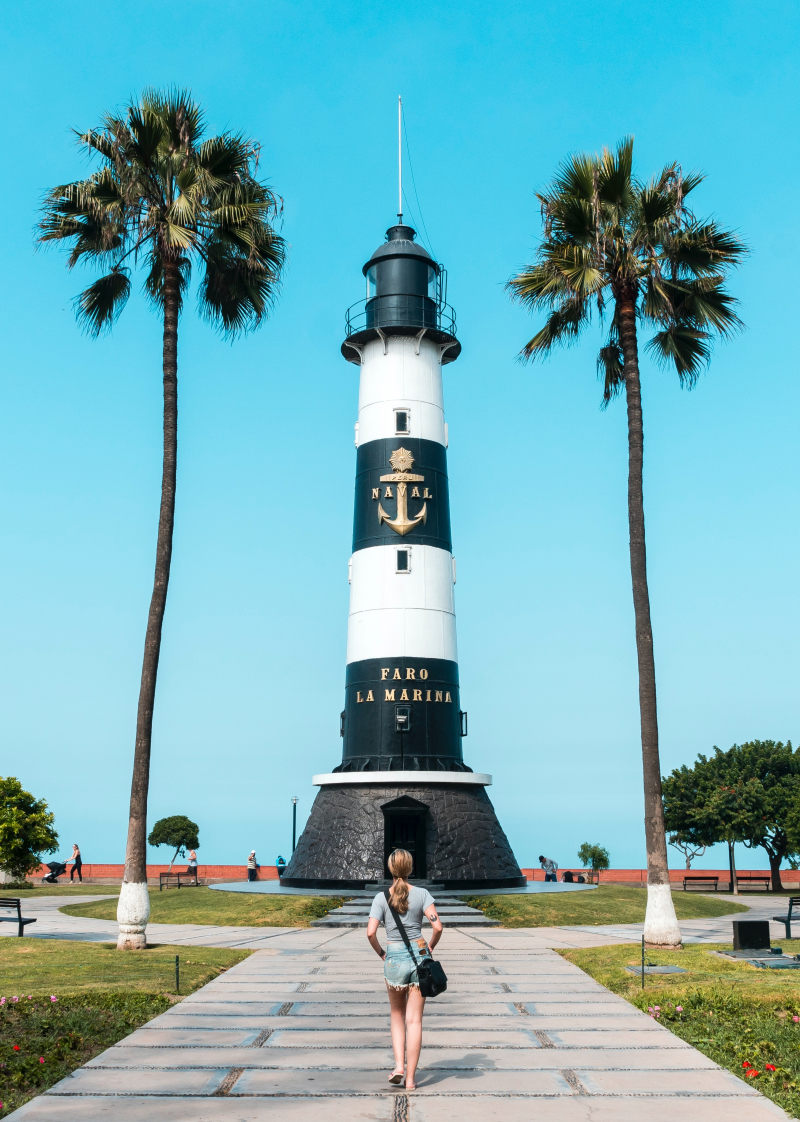
Image by Willian Justen de Vasconcellos via unsplash.com -
The San Francisco church and monastery are best known for their catacombs, which house the bones of approximately 10,000 people who were interred here when it was Lima's first cemetery. Below the church is a maze of narrow hallways with bones on both sides.
A large round hole in one area is filled with bones and skulls arranged in a geometrical pattern, much like a work of art. If Mass is being held upstairs, the sound echoes eerily through the catacombs. These are not for the faint of heart, as the ceilings are low and the doorways between chambers are even lower, requiring visitors to duck when entering. The catacombs, on the other hand, are at the end of a tour of the church, so you can skip them.
There's a lot more to see here. The upper-level library houses thousands of antique books, and the monastery houses an impressive collection of religious art. It is best known for a mural depicting the Last Supper, with the apostles eating guinea pigs and the devil standing next to Judas. The San Francisco church and monastery were dedicated in 1673, and it is one of the city's best preserved colonial churches, having survived the earthquakes of 1687 and 1746, though it did sustain extensive damage in the 1970 quake.
Google rating: 4.6/5
Address: Jr. Lampa, Lima 15001, Peru
Phone: +51 1 4267377
Website: http://www.museocatacumbas.com/Youtube Channel: konvideoful 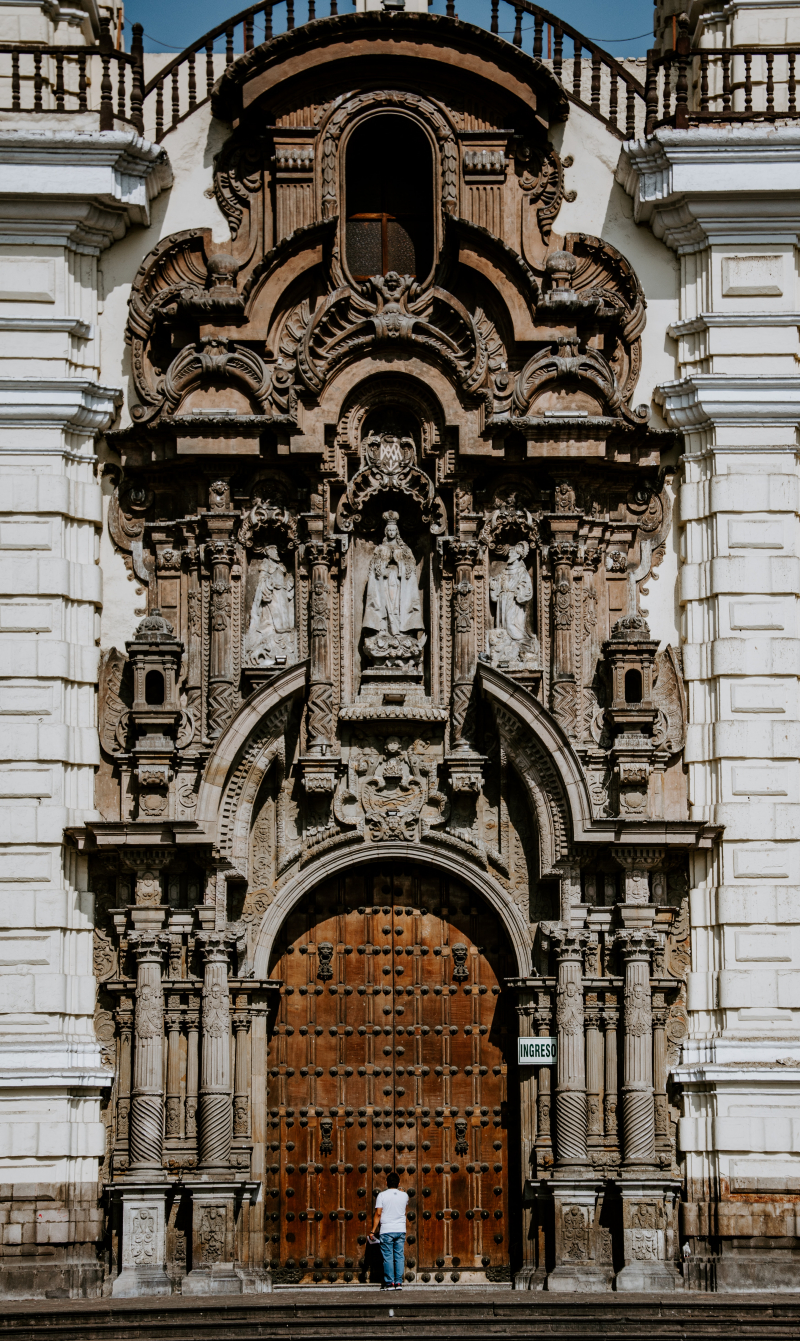
Image by Adli Wahid via unsplash.com -
The Magic Water Tour debuted in the Reserve's Park in 2007 and had two million visitors within a year. With 13 separate fountains, it holds the world record for the largest fountain complex. The Fuente Mágica, the largest, shoots a water jet more than 80 meters high, while the Fuente Tnel de las Sorpresas (Tunnel of Surprises) is a 35-meter water tunnel to walk through. A laser and picture show with jets synchronized to music can be seen at the Fuente de la Fantasia.
This water light show is fun for families and kids of all ages and is located within the Parque de la Reserva (Park of the Reserve) south of the Museo de Arte de Lima and next to the Estación Estadio Nacional. The Circuito Magico del Agua, which rivals the Bellagio fountains in Las Vegas, combines 13 automated lasers with music to create a spectacular light show. The show depicts Peruvian history through 3-D movies projected into water fountains and laser displays.
Locals and visitors alike are still in awe of the colorful display, and people recommend bringing a bathing suit so you can get up close and personal with the action (some of the fountains are interactive). While the park is free to visit during the day, the light show costs 4 sol (about $1.20). (free to children ages 4 and younger and senior citizens older than 65). Tuesday through Sunday nights (no-show Mondays) at 7:15, 8:15, and 9:30 p.m.
Google rating: 4.6/5
Address: Puerta 5, Parque de la Reserva, Av. Petit Thouars, Lima 15046, Peru
Phone: +51 1 4240827
Website: http://www.circuitomagicodelagua.com.pe/Youtube Channel: Vellanki vlogs 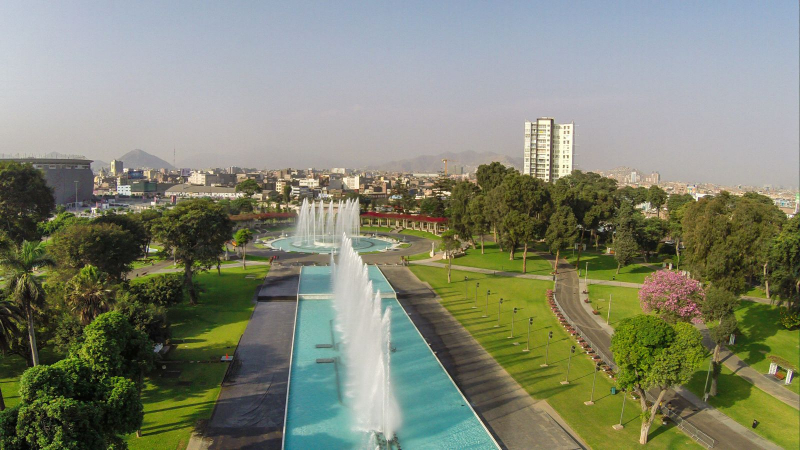
Website Official: https://www.circuitomagicodelagua.com.pe/ -
Among the best places to visit in Lima, Huaca Pucllana is one of them. Huaca Pucllana, a pyramid-shaped temple in the heart of Miraflores, is now incongruously surrounded by buildings. The pyramid is made of adobe and clay bricks, which would not have lasted more than 1,000 years in any other climate. It is made up of seven staggered platforms.
The Lima Culture, which built the pyramid, flourished on Peru's central coast between AD 200 and AD 700. It is known from artifacts discovered here that it was important as a ceremonial and administrative center. The area is divided into two sections, one of which appears to have been used for fish offerings and the other for administrative purposes. A burial vault containing human remains was discovered here, as were artifacts from the later Wari culture, which flourished in this area from about AD 500 to 900. You must tour the complex with a guide, but the tours are quite inexpensive.
Google rating: 4.6/5
Address: s/n, Ca. Gral. Borgoño cuadra 8, Miraflores 15074, Peru
Phone: +51 1 6177148Website: http://huacapucllanamiraflores.pe/
Youtube Channel: wecanfly777 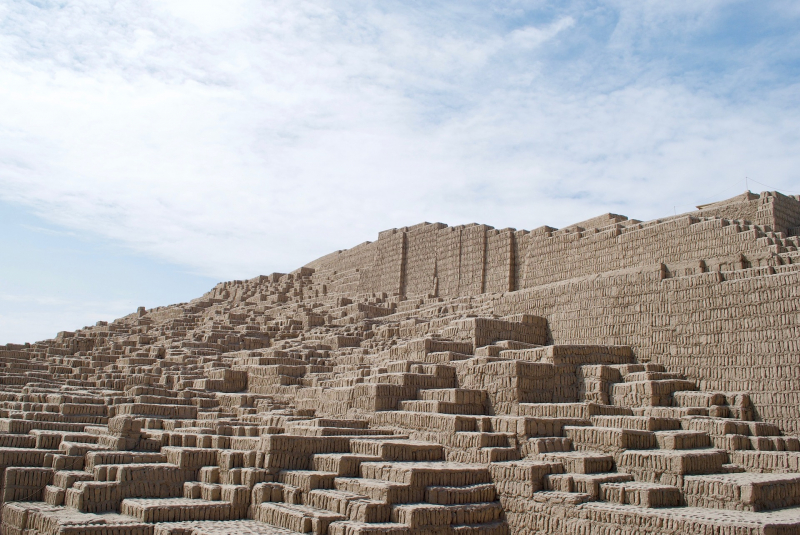
Image by rdlncl via pixabay.com -
The Plaza Mayor, also known as Plaza de Armas until 1990, is Lima's oldest public square. The city of Lima was founded in 1535 by the conquistador Francisco Pizarro on the site of an existing indigenous settlement. He envisioned a central square in the future city of Lima, with all important institutions built around it.
The Palacio de Gobierno, the presidential residence and in colonial times the location of Francisco Pizarro's house - later the Palace of the Viceroys - is located on the north side of Plaza Mayor. The Cathedral of Lima is located on the east side, flanked by the Archbishop's Palace. The Palacio Municipal is located on the Plaza Mayor's west side. Wealthy and influential immigrants were permitted to build mansions on properties near the Plaza Mayor based on their importance and rank. The main square in colonial Lima was the city's economic center. The arcades in front of the main buildings, the small street now known as Pasaje Olaya, and other adjoining streets were packed with all kinds of shops. For a long time, the plaza housed for a long time Lima's big foot market.
The Plaza Mayor served as the ceremonial heart of old Lima. All major events were held here, including religious, state, and military processions, as well as various festivities and entertainment. The Plaza Mayor was used by the Spanish Inquisition for public executions of their condemned. The first bullfight in Lima was held on Plaza Mayor in 1538, and many more followed until the Plaza de Acho was built. General Jose de San Martin declared Peru's independence here in 1821. In its over 500 years old history, the Plaza Mayor has seen all important events of Lima and Peru. It has been altered, remodeled, and rebuilt numerous times, but its layout and significance remain unchanged.
Google rating: 4.6/5
Address: Plaza central Lima, Lima 15001, Peru
Phone: none
Facebook: https://www.facebook.com/plazadearmasdelima/Youtube Channel: WalkingPe 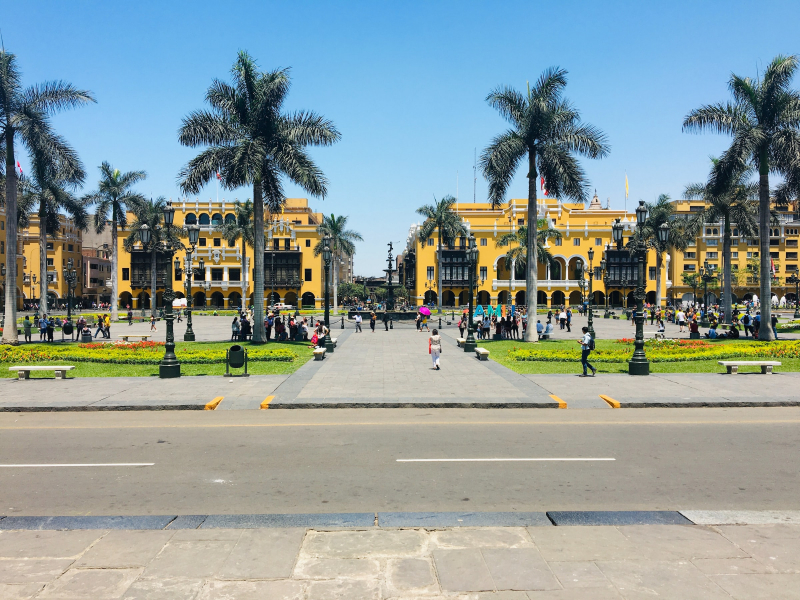
Image by Jhordy Rojas via unsplash.com -
When it comes to the best places to visit in Lima, people can't help but mention Larcomar. Larcomar, tucked away in the seafront cliffs of Miraflores, is a shopper's Shangri-La for some. Others see it as an unappealing, over-commercialized shopping mall with a good cinema.
There is no denying Larcomar's popularity among Peruvians and foreign tourists alike. Whether it's shopping for Peruvian high fashion, eating ice cream, or watching the latest 3D movie, there's plenty to keep kids and adults entertained throughout the day and into the night. It's also a place to see and be seen, with fancy restaurants and romantic seafront views giving Larcomar a sophisticated side that shopping malls rarely have.
The cliff-top location (below Parque Salazar) has drawn many major brands since it opened to the public in 1998. The complex now has over 80 shops selling everything from chocolates to clothes to traditional Peruvian artisans. You'll also find restaurants, bars, cafes, discos, and even a theater.
Google rating: 4.6/5
Address: Mal. de la Reserva 610, Miraflores 15074, Peru
Phone: +51 1 6254343
Website: http://www.larcomar.com/Youtube Channel: MOVIN' N GROOVIN' TRAVEL 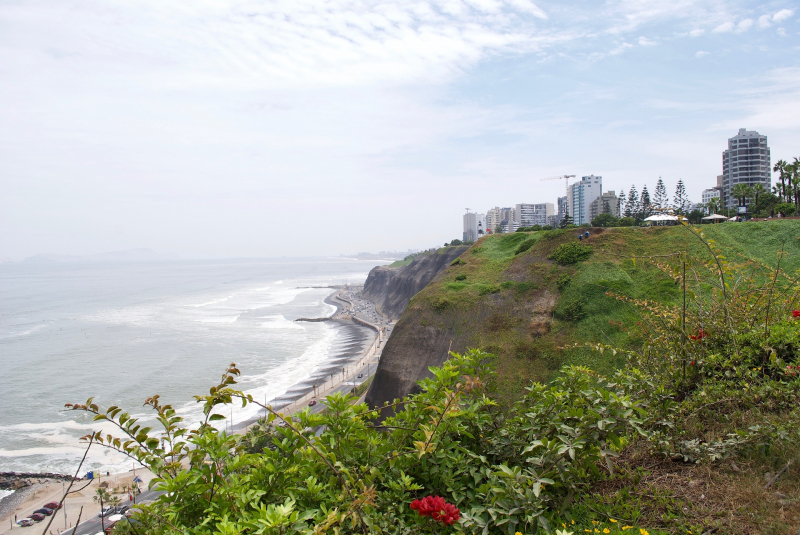
Image by rdlncl via pixabay.com -
"The eternal happiness in life is to love and be loved," as George Sand famously said. If you want to express your love to your sweetheart in a unique way or make them feel special, go to Parque del Amor in Miraflores, Lima. This lovers' park is built into the Chorrillos cliffs, giving the impression of floating over the Pacific Ocean. It practically breathes romance, surrounded by walls inscribed with love quotes.
Except in Miraflores, there is no other place on Earth or monument built specifically for lovers. A kiss, as an apt example of action, speaks louder than words; the statue of El Beso, depicting a couple passionately absorbed in the act of kissing, is based on this assumption. The park openly and unreservedly celebrates the joy of love. It is a popular hangout for people in the love of all ages. The park exudes enormous freedom for a public display of love, devoid of conventional restraints or boundaries.
Within, various "themed" competitions are held, including one for the longest kiss. Watching the sunset at Parque del Amor while embracing your loved one is an unforgettable experience. The serene and tranquil atmosphere appears to be holding you back. Visit this location if you want to experience a one-of-a-kind love sensation.
Google rating: 4.5/5
Address: Av, Mal. Cisneros, Miraflores 15074, Peru
Phone: noneWebsite: none
Youtube Channel: LITTLE WORLD CHANNEL 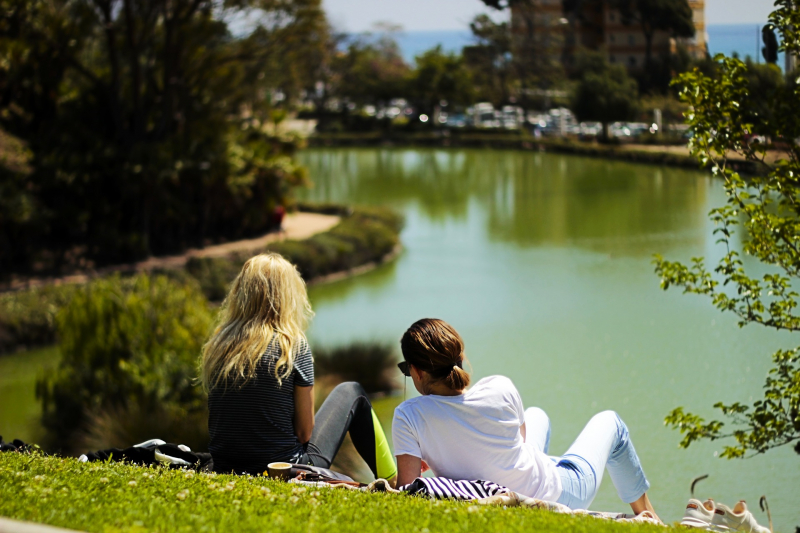
Image by Alfonso Cerezo via pixabay.com (photo is used for illustration only) -
The National Museum of Archaeology, Anthropology, and History of Peru (MNAAHP) was founded in 1826 and is Peru's oldest state museum. A wide range of perfectly preserved pre-Hispanic ceramics, textiles, metals, organic materials, and lithics are on display. Objects of historic and artistic value are on display. The documentary, photographic, and bibliographic collections depict Peru during the Colonial and Republican periods.
The museum is located in a historic colonial mansion. The historic architecture provides an ideal setting for everyone to discover, relive, and question the forefathers' life experiences. The museum invites national and international tourists, children and adults, researchers and academics, cultural and entrepreneurial institutions, and the general public to participate in and experiment with the museum's various activities and spaces.
The ceramic collection dates back to 2800 BC, and the carved obelisks include the granite Tello Obelisk and the famous Estela Raimondi. Parents should be aware that some ceramic figures may not be suitable for children. The adjacent home, once occupied by both Jose de San Martin and Simon Bolivar, is included in the museum.
Google rating: 4.5/5
Address: C. Pl. Bolívar, Pueblo Libre 15084, Peru
Phone: +51 1 3215630
Website: http://mnaahp.cultura.pe/Youtube Channel: Brien Foerster 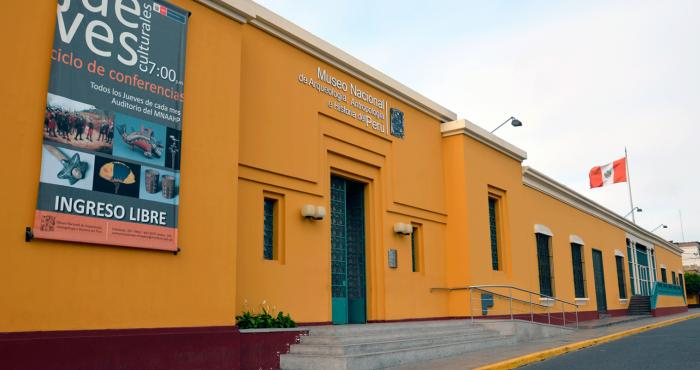
Website Official: https://mnaahp.cultura.pe/elmuseo/quienes-somos -
Miraflores Central Park, also known as Miraflores Park, is a public park in the Lima neighborhood of Miraflores. It has two parks: John F. Kennedy Park and 7 June Park. The former is responsible for the park complex's well-known name, Kennedy Park. The park is well-known for its abundance of street cats and is frequently used for book fairs and marathons, as well as Fiestas Patrias celebrations such as the Corso Wong and political and social protests.
The Parque Central de Miraflores (Miraflores Central Park, also known as Kennedy Park) is almost the center of Miraflores: everything happens around or near this location. It not only has an amphitheater where many different shows are performed daily, but it also has food and dessert stalls and several fast-food restaurants surrounding it; souvenir vendors, street artists, and even a children's playground; and it is also a space favored by families during the day and by friends (and couples) for a stroll. However, this is also the home of 50 friendly stray cats who live and roam freely and safely here because their neighbors feed and protect them. Certain sports have hidden surveillance cameras, and there is free wi-fi.
Google rating: 4.5/5
Address: VXHC+P6M, Diagonal, Miraflores 15074, Peru
Phone: +51 1 313377Website: none
Youtube Channe: LimaInTransit 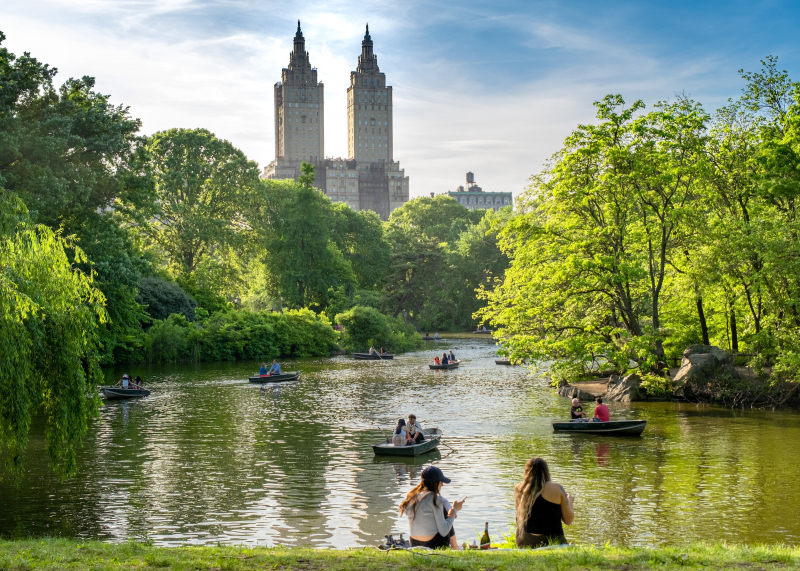
Image by Harry Gillen via unsplash.com (photo is used for illustration only) -
The "Casa de Aliaga" is Lima's oldest Colonial mansion, and possibly South America's oldest. Since 1535, when Francisco Pizarro granted the land to Jerónimo de Aliaga, the Aliaga family, and their descendants have owned and lived in the house. Originally, a pre-Colombian altar stood on the plot of land owned by "Curaca Tauli Chusco" (the reign of the Rimac valley). Even though time, weather, and pollution appear to be gradually destroying the facade, the beautiful balcony remains impressive. The interior is absolutely stunning: the inner patio is spectacular, and an imposing wooden staircase leads up to the elegant salons, which are richly decorated with Colonial furniture.
The Casa Aliaga is accessible via special tour operators in Lima or by prior arrangement with the Casa Aliaga. They can also recommend specialized private tour guides if you want to visit on your own. Or arrange a stunning (but pricey) lunch or dinner with them. An incredible experience! This is considered one of the best places to visit in Lima.
Google rating: 4.4/5
Address: Jirón de la Unión 224, Lima 15001, Peru
Phone: +51 1 4277736
Website: https://casadealiaga.com/Youtube Channel: Visita Lima 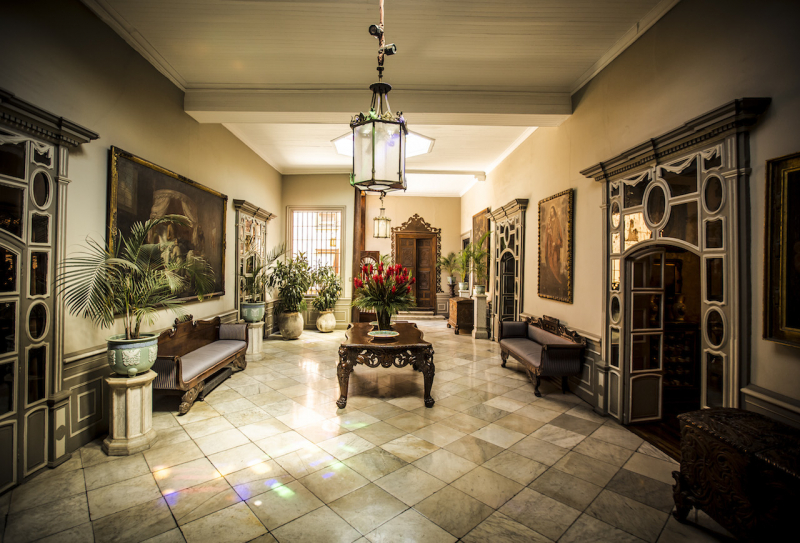
Website Official: https://casadealiaga.com/en/ -
Campo de Marte is one of Lima's largest parks, serving as a green lung for the Jesus Maria district and the city as a whole. Campo de Marte is a fantastic place to unwind, relax, and have fun. There is plenty of green space for a nice picnic or just relaxing in the sun, as well as soccer fields, tennis courts, a pool, and a skate park. The Campo de Marte hosts parades and public gatherings.
The park is home to the Ministry of Agriculture, the Ministry of Health, the Ministry of Labor and Employment, the University Pacifico, and the Jesus Maria Municipal Stadium. A monument commemorating the war between Peru and Ecuador is also located in the park, as is another dedicated to the victims of terrorism and violence in Peru during the 1980s and 1990s. The arch-shaped bridge was built to commemorate the centennial of the arrival of Japanese immigrants and to symbolize the relationship between Japan and Peru.
Google rating: 4.3/5
Address: Jesús María 15072, Peru
Phone: +51 1 6141212Website: http://www.munijesusmaria.gob.pe/
Youtube Channel: WalkingPe 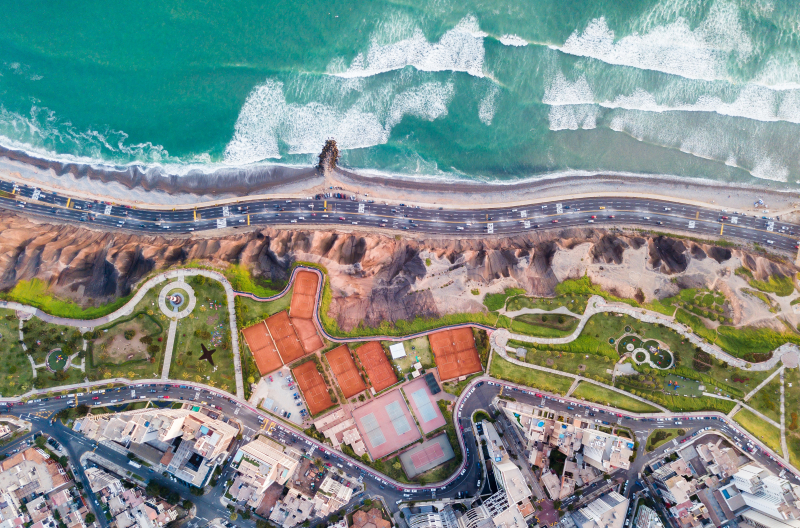
Image by Willian Justen de Vasconcellos via unsplash.com (photo is used for illustration only) -
The Exposition Park was built during the José Balta administration, shortly after the Lima Wall collapsed (the bastion of the Pacific War). In 1872, it was dedicated next to the Palace of the Exposition (now the Museum of Art). The beautiful Chinese Fountain, a gift of the Chinese colonists settled in Lima, was inaugurated during the celebration of the Centennial of Independence (1921). It is located in the heart of Lima's Santa Beatriz neighborhood, bounded by Paseo Colón, Wilson, Paseo de la Repblica, and 28 de Julio avenues.
The traditional Parque de la Exposición is one of Lima's most beautiful parks, and its interiors house the Lima Art Museum, the Parque Japonés, and the Lima Metropolitan Museum. In this park, you will also find: The amphitheater is named after the Afro-Peruvian poet and essayist Nicomedes Santa Cruz. This amphitheater has a seating capacity of around 4,000 people. Its facilities are required for national and international level presentations.
The "La Cabaa" Theater, hosts theatrical and cultural performances for both children and adults. It has large and lovely gardens that can be used for family and social events such as weddings and anniversaries, as well as business and institutional celebrations. There is also a parking esplanade for craft fairs, mechanical games, a lagoon for pedal boats, and puppet islands in this park.
Google rating: 4.3/5
Address: Av. 28 de Julio, Lima 15046, Peru
Phone: +51 1 2005508Website: http://www.serpar.gob.pe/parques-metropolitanos/
Youtube Channel: WalkingPe 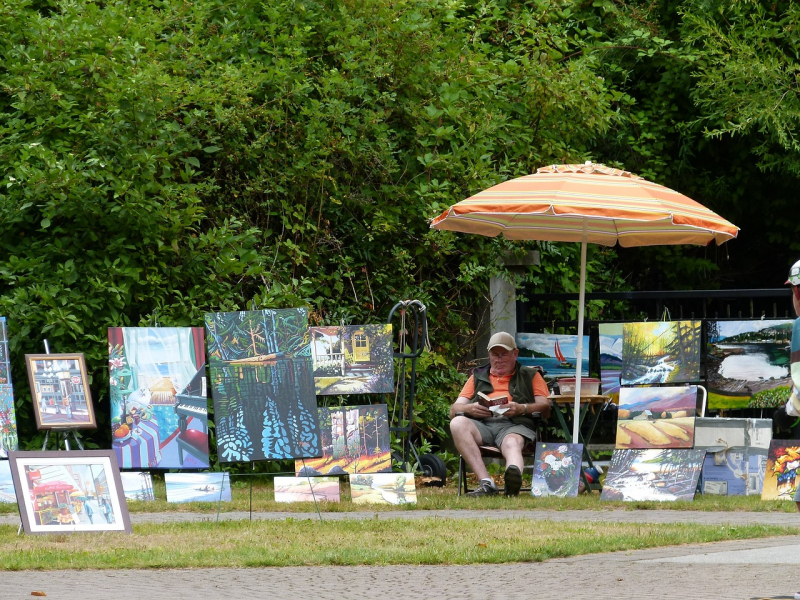
Image by ArtTower via pixabay.com (photo is used for illustration only)

















